Installing and maintaining a kitchen sink is a crucial aspect of home upkeep. Always choose materials that suit your usage and aesthetics, and ensure regular cleaning to prevent clogs and wear. Remember, timely maintenance can save costly repairs, keeping your sink functional and pristine for years to come.
The kitchen sink, pivotal in daily culinary tasks, not only serves functionality but also enhances kitchen aesthetics when correctly installed. However, its longevity hinges on proper care and attention. Dive into this guide to grasp the nuances of adept kitchen sink installation and diligent maintenance, ensuring your sink remains both functional and visually appealing.
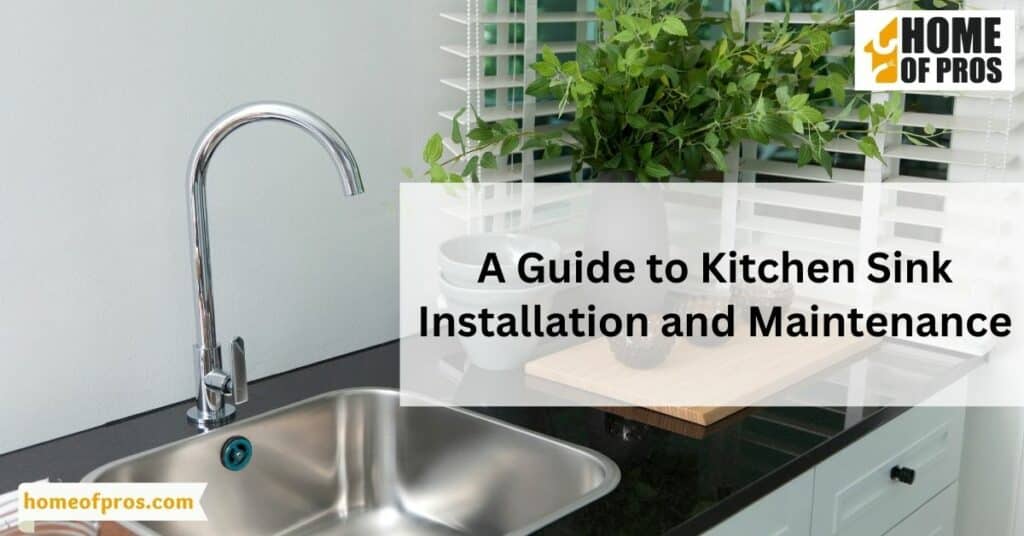
Choosing the Right Sink for Your Kitchen
Selecting the perfect kitchen sink is more than just a functional decision; it’s a design statement that influences the overall aesthetic of your culinary space. With a multitude of materials and styles available, making the right choice can be both exciting and challenging. In this guide, we’ll navigate through the key factors to consider when choosing the ideal sink for your kitchen, from the materials that suit your taste to the practical dimensions and installation types that best match your needs.
| Materials | Advantages | Considerations |
|---|---|---|
| Stainless Steel | – Durable and heat-resistant | – Prone to water spots and scratches |
| Porcelain | – Classic look | – Can chip and stain |
| Composite Granite | – Durability and resistance to stains | – Unique, muted appearance |
| Factors to Consider | Description |
|---|---|
| Size | Ensure it fits your counter space and needs. |
| Depth | Choose between deep for larger pots or shallow for ergonomics. |
| Type | Decide between undermount for a sleek look or a top mount for ease of installation. |
Your kitchen sink is more than just a functional fixture; it’s a reflection of your style and practical needs. By considering the various materials available and evaluating factors such as size, depth, and type, you can confidently choose a sink that complements your kitchen’s aesthetics and enhances your daily cooking experience.
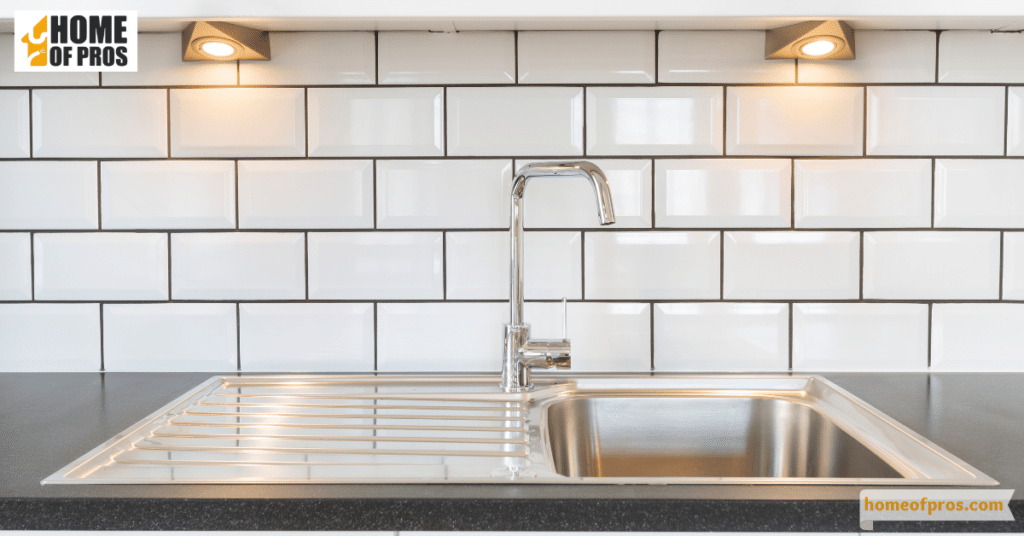
Essential Tools and Materials for Installation
When it comes to installing a kitchen sink, having the right tools and materials on hand is essential for a smooth and successful installation process. Here’s a list of the key items you’ll need and a brief explanation of each tool’s purpose:
- Plumber’s Putty: This malleable, waterproof sealing compound is used to create a watertight seal between the sink and the countertop. It prevents water from seeping beneath the sink and causing damage.
- Adjustable Wrench: An adjustable wrench is indispensable for tightening and loosening nuts and bolts during the installation. It allows for precise control and ensures a secure fit.
- Pipe Wrench: This specialized wrench is used for working with pipes and plumbing fittings. It provides a firm grip, making it easier to install and secure the sink’s plumbing connections.
- Screwdriver Set: A set of screwdrivers, including both flathead and Phillips-head varieties, is needed for various tasks like attaching mounting brackets, securing faucet components, and tightening screws.
- Caulking Gun and Sealant: Caulking is crucial for sealing gaps around the sink and between the sink and countertop. A caulking gun helps apply a consistent bead of sealant, creating a watertight seal.
- Hacksaw: In cases where plumbing pipes need to be trimmed or adjusted to fit, a hacksaw can be used to cut through metal or plastic pipes cleanly and accurately.
- Bucket and Towels: Have a bucket on hand to catch any water or debris that may spill during the installation. Towels can help keep your work area clean and dry.
- Safety Gear: Don’t forget safety goggles and gloves to protect your eyes and hands from any potential hazards during the installation process.
By ensuring you have these essential tools and materials ready, you’ll be well-prepared to tackle the kitchen sink installation with confidence, ensuring a secure and functional addition to your culinary space.
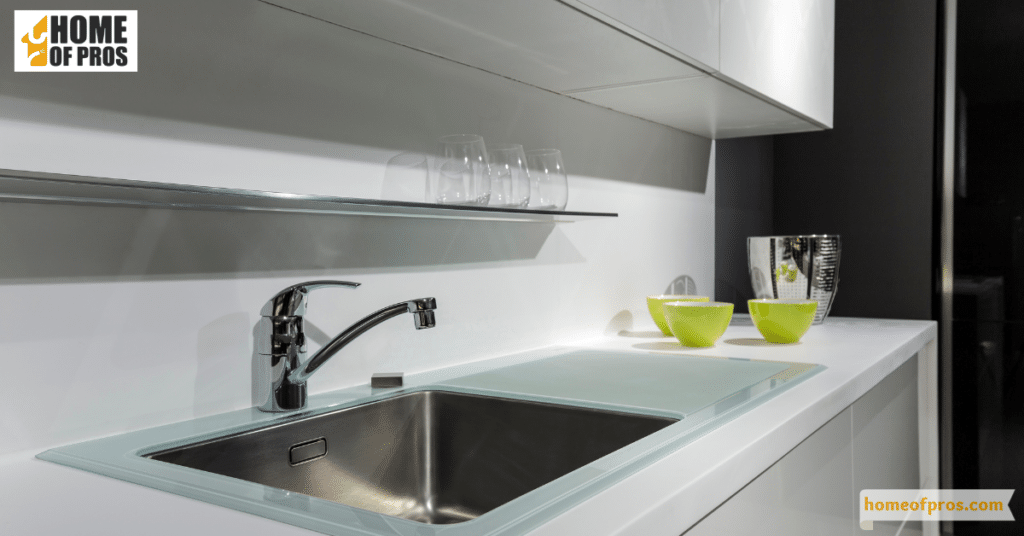
Common Issues and How to Address
While a well-installed kitchen sink can be a joy to use, it’s not immune to common issues that can crop up over time. Leaks, poor drainage, and the dreaded rust can all make your kitchen sink experience less than ideal. Fortunately, with a bit of know-how, you can tackle these problems head-on and restore your sink to its optimal functionality.
1. Leaking Sink
A leaking sink can be caused by loose or damaged connections. Start by turning off the water supply valves beneath the sink. Inspect all the connections, including the faucet, supply lines, and drain pipes. Tighten any loose fittings with a wrench, being careful not to overtighten. If you find damaged gaskets or seals, replace them with new ones. After making the necessary repairs, turn the water supply back on and check for any remaining leaks.

2. Poor Drainage
Slow-draining sinks are often the result of debris and buildup in the drainpipe. Begin by removing the sink stopper or drain cover. Use a plunger to create a seal over the drain and plunge up and down vigorously to dislodge any clogs. If the plunger doesn’t work, try using a plumbing snake or drain auger to reach deeper into the pipe and remove the blockage. For preventive maintenance, consider regularly pouring a mixture of hot water and vinegar down the drain to help dissolve grease and soap scum.
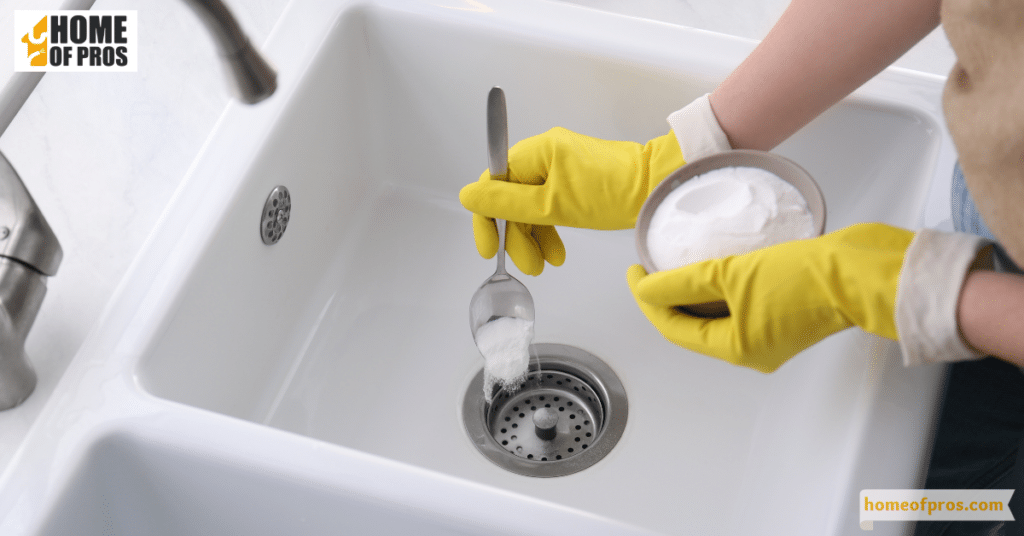
3. Rust Stains
Rust stains can develop on stainless steel sinks, especially if your water supply contains high levels of iron. To remove these stains, create a paste by mixing baking soda and water. Apply the paste to the rust stains and gently scrub the affected areas with a soft cloth or sponge. Rinse thoroughly and dry the sink. To prevent future rust, avoid leaving iron or steel objects in the sink for extended periods. Additionally, consider installing a water softener if your water supply is prone to rust-related issues.
By following these detailed troubleshooting tips, you can effectively address common kitchen sink issues and maintain a clean, functional, and attractive sink in your culinary space.
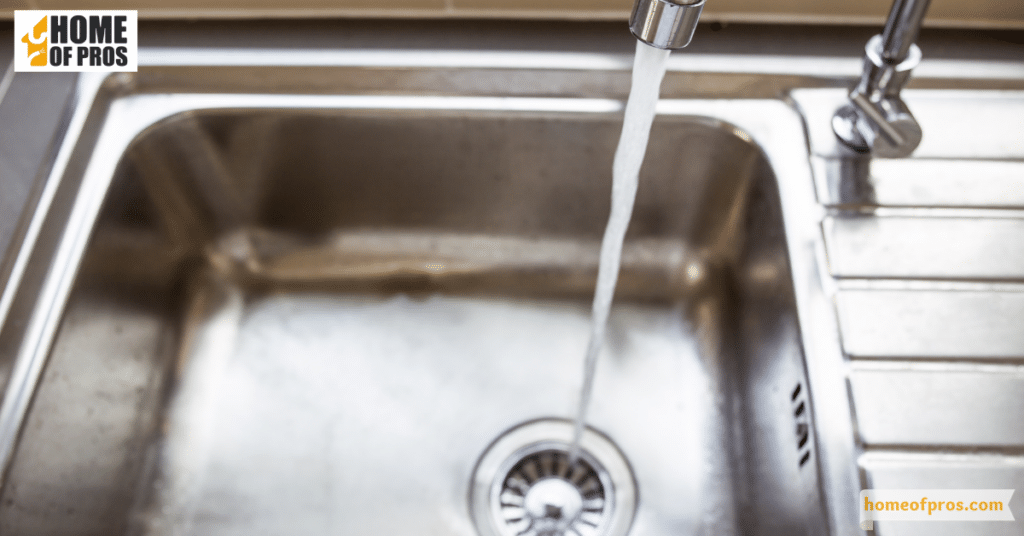
Maintenance Tips to Extend Sink Lifespan
Your kitchen sink is a workhorse, handling everything from dirty dishes to food prep. To keep it functioning flawlessly and looking pristine for years, proper maintenance is essential. This guide offers invaluable tips on how to extend the lifespan of your sink with smart cleaning habits and careful product choices.
- Daily Cleaning Habits:
- Rinse the sink after each use to prevent food buildup and stains.
- Use a soft cloth or sponge to wipe away debris and maintain its shine.
- Periodic Deep Cleaning:
- Employ a paste made of baking soda and water to gently scrub the sink’s surface.
- Rinse thoroughly and consider using lemon juice to disinfect and remove stains.
- Avoid Abrasive Cleaners:
- Steer clear of abrasive scouring pads, steel wool, and harsh chemical cleaners that can scratch or damage the sink’s finish.
- Recommendations for Cleaning Agents and Methods:
- Opt for mild dish soap and warm water for daily cleaning.
- Use stainless steel polish if you have a stainless steel sink to restore its luster.
With these maintenance tips in your arsenal, your kitchen sink will remain a shining example of both form and function. Daily care, occasional deep cleaning, and a gentle touch are the keys to preserving the longevity and aesthetic appeal of this vital kitchen element.
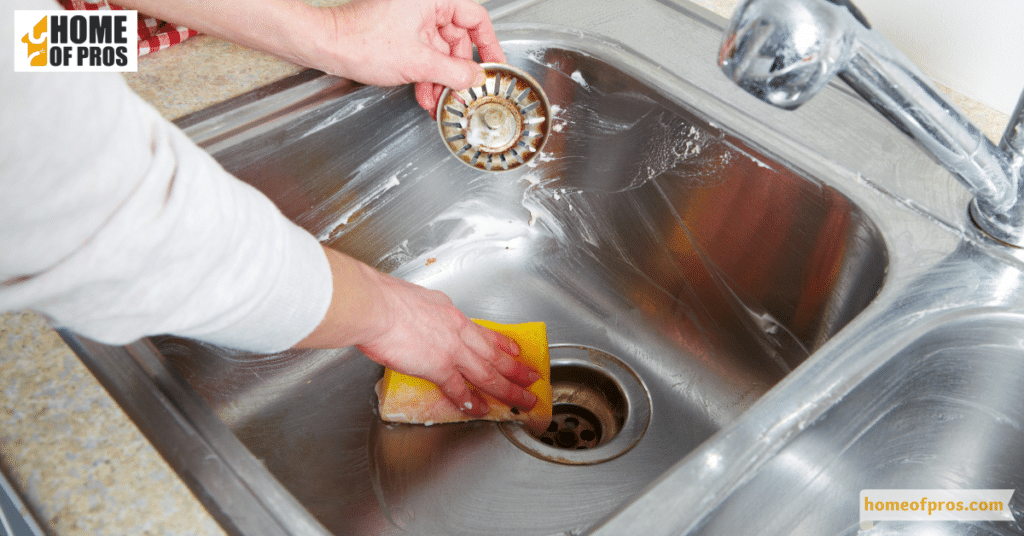
When to Seek Professional Help
While tackling home improvement projects and repairs can be satisfying, there are times when the expertise of a professional is not just helpful, but essential. When it comes to your kitchen sink, knowing when to seek professional help can save you from potential headaches and costly mistakes.
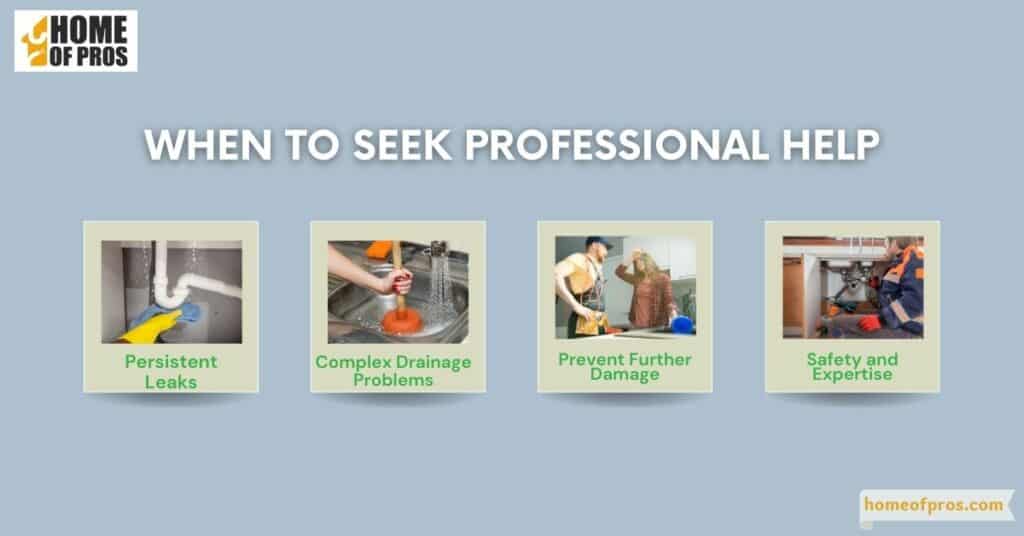
- Persistent Leaks: If you’re dealing with recurrent or substantial leaks that aren’t resolved by basic tightening or sealing, it’s a clear indication that professional assistance is needed.
- Complex Drainage Problems: When common DIY methods like plunging or snaking don’t alleviate slow or clogged drainage, it suggests a deeper and more intricate plumbing issue that requires expert attention.
- Prevent Further Damage: Professionals can accurately diagnose issues and address them before they escalate, potentially saving you from expensive repairs and additional damage.
- Safety and Expertise: Plumbing work often involves risks and precise knowledge. Professionals have the skills, tools, and safety measures to ensure the job is done correctly and safely.
Knowing when to enlist the services of a professional is a crucial aspect of maintaining your kitchen sink’s functionality and preventing more significant problems down the line. Don’t hesitate to seek expert assistance when needed; it can save you both time and money in the long run.
In conclusion
Recognizing the limitations of DIY fixes and understanding when professional help is warranted can make a significant difference in the health and longevity of your kitchen sink. While tackling minor issues on your own is commendable, certain problems demand the expertise of a skilled plumber or maintenance professional.
By prioritizing timely intervention when necessary, you can safeguard your sink’s functionality, prevent further damage, and ensure the continued efficiency of your kitchen’s essential element. So, whether it’s a stubborn leak or a complex drainage concern, remember that seeking












